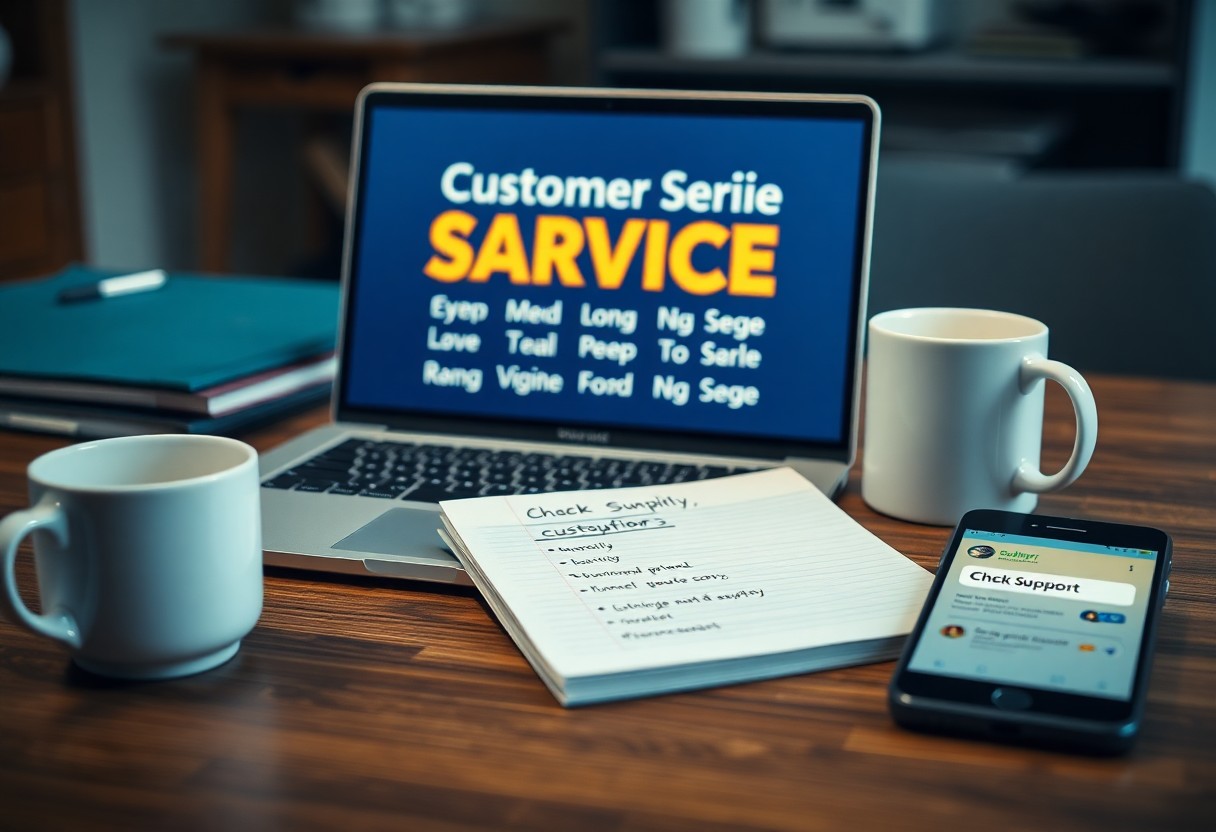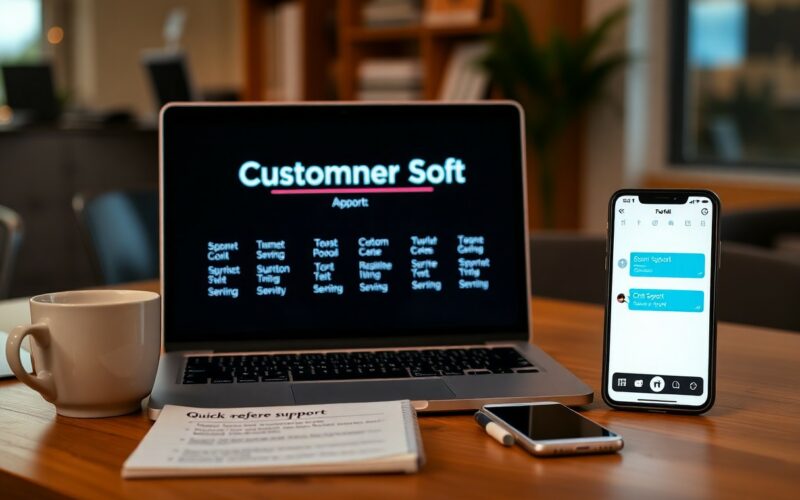Just as you navigate the world of customer service, you may encounter a host of acronyms that can seem overwhelming. This guide is designed to help you clarify and understand some of the most frequently used abbreviations in the industry. By decoding these acronyms, you can improve your communication skills and enhance your interaction with customers, ultimately leading to better service outcomes. Dive into this reference guide to empower your customer service experience!

Understanding Customer Service Acronyms
To effectively navigate the landscape of customer service, it’s crucial to grasp the terminology that is frequently used in the field. Acronyms serve as quick shorthand that enables you to communicate more efficiently with your colleagues and clients. Understanding these compressed forms of language can significantly improve your comprehensibility and engagement in discussions regarding customer support strategies.
Definition of Acronyms
Behind their simple appearance, acronyms are formed by taking the initial letters of a series of words and creating a single term. This linguistic tool can represent complex concepts in customer service, like ‘CSAT’ for Customer Satisfaction or ‘NPS’ for Net Promoter Score, streamlining communication without compromising clarity.
Importance of Acronyms in Customer Service
For anyone working in customer service, understanding acronyms can enhance your ability to analyze data, share insights, and develop strategies. These abbreviations not only save time but also facilitate smoother conversations and efficient information exchanges among team members.
Indeed, becoming fluent in customer service acronyms can have a profound effect on your interactions and workflows. When you’re familiar with terms like SLAs (Service Level Agreements) or CRM (Customer Relationship Management), you position yourself as a knowledgeable member of the team. This proficiency allows you to better respond to customer needs, monitor performance metrics, and ultimately improve service quality. Embracing this vocabulary not only enhances your professional effectiveness but also boosts team collaboration and customer satisfaction.
Commonly Used Customer Service Acronyms
Clearly, understanding customer service acronyms is fundamental for enhancing your team’s efficiency and effectiveness. Here’s a quick reference to some of the most commonly used terms in customer service.
CSAT – Customer Satisfaction
By measuring customer satisfaction, you can gauge how happy your customers are with your service. A higher CSAT score indicates that your customers are satisfied and likely to remain loyal.
Considering CSAT provides insights into your service quality, it is necessary for you to conduct regular surveys and feedback sessions to continuously improve and adapt to your customers’ needs. This metric helps you fine-tune your offerings and enhances overall customer relationship management.
NPS – Net Promoter Score
Against traditional survey methods, NPS is a straightforward metric that assesses the likelihood of your customers recommending your service to others. A high NPS suggests strong customer loyalty.
Considering NPS is calculated based on a simple question, it can be a powerful indicator of your brand’s reputation. You can use the scores to segment your customer base into promoters, passives, and detractors, allowing you to tailor your approach to each group and improve customer experience.
SLA – Service Level Agreement
Service Level Agreements outline the expected standards of service you must provide to your customers. Clear SLAs help manage your client’s expectations and ensure accountability within your team.
Further, an SLA typically includes response times, resolution times, and performance metrics. By adhering to these agreements, you can enhance trust with your customers and improve overall service quality. Regular reviews of your SLAs can help you keep pace with changing customer expectations.
FCR – First Contact Resolution
Against industry standards, First Contact Resolution (FCR) measures how often customer inquiries are resolved on the first interaction. High FCR rates signify effective service, which can greatly enhance customer satisfaction.
Indeed, FCR is directly linked to customer loyalty—resolving issues swiftly leads to a more positive experience. By focusing on training your team and implementing efficient processes, you can improve your FCR rate, reducing follow-up interactions and enhancing operational efficiency.
AHT – Average Handle Time
With AHT, you track the average duration taken to resolve customer issues, including talk time and hold time. Monitoring AHT helps streamline customer interactions for greater efficiency.
CSAT plays an integral role as reducing AHT can positively influence your customer satisfaction rates. While aiming for lower AHT, ensure that quality service is not compromised. A balanced approach enhances both efficiency and customer experience.

Acronyms Related to Customer Feedback
Once again, understanding customer service acronyms can significantly enhance your communication and operational efficiency. In the context of customer feedback, being familiar with specific terminology is necessary for success in your role.
CSM – Customer Success Manager
Across various industries, a CSM plays a vital role in ensuring that customers achieve their desired outcomes while using your product or service. By acting as a bridge between your organization and the customer, the CSM focuses on building relationships and addressing any concerns that may arise during the customer journey.
VOC – Voice of the Customer
Acronyms like VOC are key to understanding what your customers truly think and feel. The Voice of the Customer refers to insights gathered from customer feedback, surveys, and reviews, which help you identify trends and areas for improvement within your organization.
In addition to improving your products and services, capturing the VOC allows you to foster a culture of customer-centricity. This approach not only increases customer satisfaction but also cultivates loyalty and long-term relationships. Actively engaging with the VOC means that your company remains agile and responsive to the changing needs of your customers.
CES – Customer Effort Score
Score your customer experience with the CES, which gauges how easy or difficult it is for customers to interact with your business. By assessing the level of effort required to resolve an issue or complete a transaction, you can gain insights into friction points that may hinder customer satisfaction.
Customer Effort Score is an important measure that can help you identify pain points in your processes. A lower score indicates that customers find it difficult to engage with your service, while a higher score suggests a smooth experience. By focusing on reducing customer effort, you enhance overall satisfaction and drive customer loyalty, which directly impacts your organization’s success.

Technical and Operational Acronyms
Your understanding of customer service can greatly improve by familiarizing yourself with key technical and operational acronyms. These terms are necessary for navigating customer service environments effectively and can enhance your communication and efficiency.
CRM – Customer Relationship Management
Before implementing a CRM system, it’s important to recognize how it serves as a comprehensive tool for managing your company’s interactions with current and potential customers. It organizes, automates, and synchronizes sales, marketing, customer service, and technical support, helping you build stronger relationships.
IVR – Interactive Voice Response
Relationship management is streamlined with the use of IVR systems, which allow customers to interact with a computer-operated phone system through voice or keypad inputs. This technology aids in routing calls and providing information without the need for human agents.
The IVR system not only enhances customer experience by reducing wait times but also allows you to gather important data and address customer inquiries efficiently. By providing self-service options, customers can access the information they need quickly, while your team can focus on more complex issues that require a human touch.
KPI – Key Performance Indicator
An effective measure of your customer service success is the use of KPIs, which are metrics that help you evaluate performance and effectiveness. By analyzing KPIs, you gain insights into service quality and customer satisfaction, leading to informed decision-making.
It is necessary to track KPIs such as customer satisfaction scores, first response times, and resolution rates. Monitoring these indicators lets you identify strengths and weaknesses within your customer service strategy, allowing you to make adjustments that improve overall performance and customer loyalty.
Acronyms Involving Support and Communication
Keep in mind that customer service acronyms often stand for key concepts that streamline communication and enhance efficiency in support roles. Understanding these acronyms enables you to navigate the customer service landscape more effectively.
FAQ – Frequently Asked Questions
One of the most common acronyms in customer service is FAQ, which stands for Frequently Asked Questions. This section addresses the most common queries your customers may have, helping you save time and provide quick, informative responses.
TAT – Turnaround Time
An important metric in customer service is TAT, or Turnaround Time. It measures the time taken to resolve a customer’s issue or complete a service request, impacting customer satisfaction directly.
Acronyms like TAT are significant because they allow you to set clear expectations for your customers regarding how long they will wait for answers or solutions. By monitoring TAT, you can identify bottlenecks in your processes and improve efficiency. A shorter TAT can lead to increased customer satisfaction and can enhance your organization’s overall performance.
UAT – User Acceptance Testing
Acronyms like UAT, or User Acceptance Testing, refer to an important phase in product development and service deployment. This process ensures that the final product meets your customers’ needs and expectations.
Involving UAT in your workflow allows you to gather valuable feedback directly from users before full implementation. It significantly reduces the risk of errors and enhances user experience. By ensuring that your product or service is validated by actual users, you foster a more positive interaction and strengthen customer loyalty. This process is imperative for maintaining high standards and ensuring customer satisfaction.
Industry-Specific Acronyms
All industries have their own lingo, and customer service is no exception. Understanding these industry-specific acronyms is vital for enhancing communication in your field.
B2B – Business to Business
An acronym often heard in corporate settings, B2B refers to transactions and services conducted between businesses. Customer service in a B2B context typically focuses on building long-term relationships and ensuring that solutions meet the needs of both companies involved.
B2C – Business to Consumer
Between businesses and consumers, B2C signifies direct sales or services offered to end users. In this model, customer service plays a pivotal role in enhancing customer satisfaction and loyalty.
This interaction often includes addressing customer inquiries, providing support, and resolving issues efficiently. Strong B2C customer service can lead to increased customer retention and a better overall brand reputation, significantly impacting your company’s success.
D2C – Direct to Consumer
About D2C, this model bypasses retailers and connects manufacturers directly with consumers. In this framework, customer service is crucial for establishing trust and building a strong customer base.
Another benefit of the D2C model is the opportunity it provides you to gather valuable customer feedback. By engaging directly with customers, you can make informed decisions to improve your products and services, enhancing their overall experience while also driving your business growth.
Best Practices for Using Acronyms in Customer Service
Not all customer service interactions benefit from the use of acronyms. It’s necessary to strike a balance between efficiency and clarity. Overusing acronyms can alienate customers who may not be familiar with industry jargon. For a comprehensive list of Contact center acronyms you should know, refer to trusted sources.
When to Use Acronyms
Against common practice, using acronyms can be more effective when your audience is familiar with them. In a technical or specialized environment where everyone understands specific acronyms, they can save time and communication efforts. However, always gauge your audience’s knowledge before relying on them.
Ensuring Clarity and Understanding
On the contrary, if there’s a chance your customer may not understand an acronym, it’s better to avoid using it. Providing full terms, at least initially, can prevent miscommunication and foster trust. A clear dialogue helps establish rapport and enhances customer satisfaction.
To maximize clarity, prioritize straightforward communication. Define acronyms on their first use and offer explanations during conversations. When in doubt, opt for the full phrase, as this ensures everyone is on the same page. Cultivating a culture of open communication will improve your overall service experience and foster a positive atmosphere.
Educating Team Members on Acronyms
Practices for educating your team on acronyms are necessary for ensuring that everyone has a common understanding. Conduct regular training sessions and create easy-to-reference guides that outline commonly used acronyms within your organization.
Hence, equip your team with knowledge by emphasizing the importance of understanding acronyms that are frequently used in customer interactions. Encourage open discussions about which terms need clarification and provide resources that help your team stay informed. This proactive approach empowers your team to communicate effectively and maintain strong relationships with customers.
Conclusion
Presently, understanding common customer service acronyms can significantly enhance your communication and efficiency in this field. By familiarizing yourself with these terms, you not only improve your interactions with customers and colleagues but also boost your professional competence. Make use of this quick reference guide to navigate the language of customer service with ease, empowering you to provide even better support and foster stronger relationships.


![10 Must-Have AI Tools for Startups & Small Businesses [2026]](https://smartgeekguide.com/wp-content/uploads/2025/10/top-10-ai-tools-for-startups-2026-xmg-360x240.jpg)






